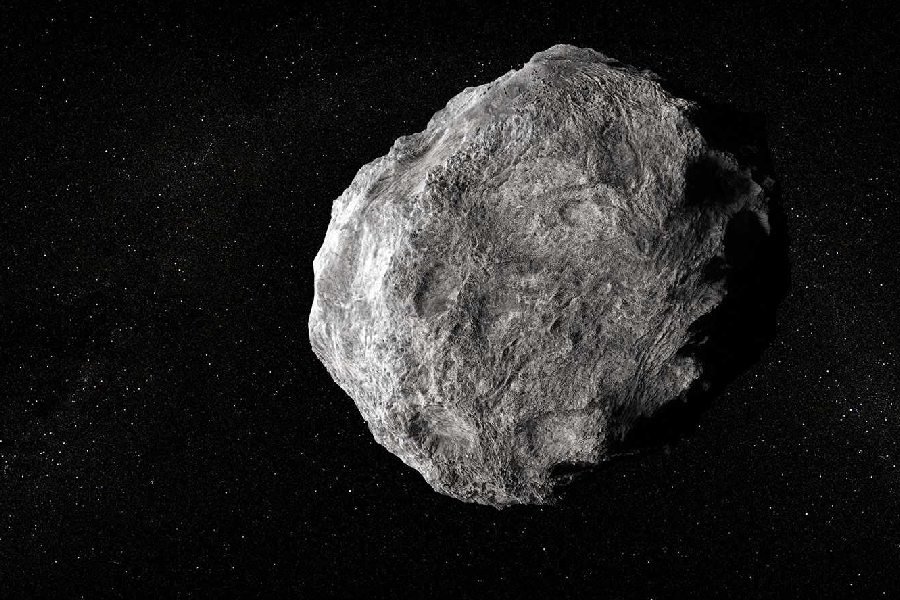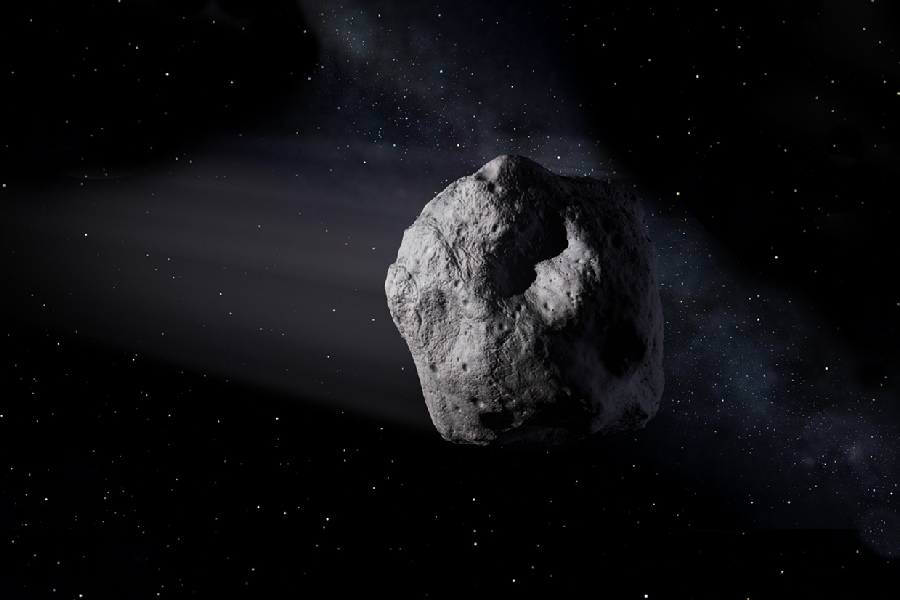Asteroids represent a unique class of minor planets that have captivated astronomical curiosity. Numbering in the millions across our solar system, these small rocky bodies hold intriguing clues into planetary formation processes and the early Solar System environment.
Understanding when were asteroids discovered provides an insightful window into the evolution of observational technology and cosmic comprehension over centuries.
Early astronomers equipped with basic optics produced the first grainy glimpses of these mysterious objects, though often misinterpreting them as comets or stars.
This article will navigate the incremental revelations that slowly brought the nature of asteroids into focus, beginning with the earliest inexplicable sightings by surveyors of the sky. We will highlight pioneers who advanced detection methods, models, and classification systems to differentiate asteroids from other phenomena.
Along the way, a cast of determined observers devoted themselves to puzzling out the orbital paths and physical properties of these cosmic wanderers. Their persistent efforts unveiled a small world of minor planets that have significantly expanded our planetary perspective.

When Were Asteroids Discovered?
So, when were asteroids discovered, and who discovered the first asteroid? Asteroids were first discovered in the early 19th century. The inaugural sighting occurred on January 1, 1801, when Italian astronomer Giuseppe Piazzi identified the celestial body Ceres.
Subsequent observations revealed more asteroids, and the term “asteroid” was coined by Sir William Herschel. The discovery marked a significant breakthrough in astronomical understanding. It expanded our awareness of celestial objects beyond the known planets.
Since then, ongoing observations and advancements in technology have unveiled a multitude of asteroids. This unveiling has contributed to our evolving comprehension of the Solar System and the cosmos.
Record of Past Observations
Historical records of celestial observations
Early sky gazers, armed with rudimentary tools, documented celestial observations that hinted at the existence of mysterious celestial bodies.
In ancient texts, references to “wandering stars” and unusual points of light spark curiosity about early inklings of asteroids. These records, though indirect, provide glimpses into the awareness of celestial phenomena beyond the recognized planets.
Early astronomers’ contributions
Pioneering astronomers, from ancient civilizations to the Renaissance, laid the groundwork for asteroid discovery. Visionaries like Claudius Ptolemy and Tycho Brahe made meticulous observations, marking the positions of celestial bodies.
While not directly identifying asteroids, their meticulous records set the stage. This stage fostered a curiosity that would drive future astronomers to explore the cosmos more deeply.
Kepler’s laws and celestial mechanics
Johannes Kepler’s laws of planetary motion, formulated in the early 17th century, revolutionized celestial mechanics. These laws laid a foundation for understanding the motion of celestial bodies.
Indirectly influencing the future discovery of asteroids. Kepler’s work fueled the scientific fervor, motivating subsequent generations to uncover the secrets hidden among the stars.
Herschel’s contributions
William Herschel, an astronomer of the 18th century, significantly advanced our understanding of the night sky.
His meticulous observations, primarily focused on nebulae and star clusters, inadvertently laid the groundwork for future asteroid discoveries. Herschel’s dedication to cataloging and documenting celestial objects paved the way for astronomers who followed.
Herschel’s most notable achievement was the discovery of Uranus in 1781. While not an asteroid, this event showcased his revolutionary approach to exploring the cosmos.
Herschel’s pioneering use of telescopes set the stage. This stage was for later astronomers to employ similar tools in the quest for smaller, more elusive celestial bodies.
The dawn of modern astronomy
Herschel’s work marked the dawn of modern astronomy, setting the stage for the exploration of the solar system’s outer reaches. His contributions, though indirect in the search for asteroids, reflected the evolving methods and tools that would eventually lead to their discovery.

First Discovery of an Asteroid
The discovery of Ceres
In 1801, Italian astronomer Giuseppe Piazzi made history by spotting a new celestial object, later named Ceres. Ceres, initially thought to be a new planet, was the first officially documented discovery of an asteroid.
Piazzi’s discovery of Ceres marked a groundbreaking moment in the history of astronomy. It challenged traditional notions of planetary limits and sparked a new era of celestial exploration.
Ceres, now classified as a dwarf planet, opened the door to the identification of numerous asteroids. This identification reshaped our understanding of the vastness of the Solar System.
The recognition of Ceres as a celestial entity distinct from planets paved the way for astronomers to identify other similar objects. Piazzi’s keen observation expanded the celestial catalog.
It also laid the foundation for the systematic exploration of the asteroid belt between Mars and Jupiter. The first documented asteroid discovery became a catalyst for future advancements in understanding our cosmic neighborhood.
Olbers’ contributions
Heinrich Olbers, a German astronomer of the 18th and 19th centuries, played a pivotal role in advancing astronomical understanding. His work encompassed various facets of celestial phenomena, leaving a lasting impact on the field.
Olbers made notable observations of celestial bodies, contributing valuable data to the astronomical community. His meticulous documentation included positions and movements of planets, stars, and comets, enhancing our comprehension of the night sky.
Olbers delved into theories related to celestial bodies, exploring their composition and behaviors. His insights went beyond mere observation, laying the groundwork for understanding the dynamic nature of the cosmos. Olbers’ theories contributed to the evolving narrative of celestial bodies within our solar system and beyond.
Asteroids – Their Discovery and Orbits
The discovery process of asteroids
The identification of asteroids involves systematic sky surveys and observations. Astronomers employ powerful telescopes to scan the night sky, capturing images and identifying faint moving objects.
Asteroids are often discovered through meticulous comparison of images taken at different times. This comparison reveals their distinct trajectories against the backdrop of fixed stars. Once identified, these celestial objects undergo a thorough verification process before confirmation.
Orbital characteristics of asteroids
Understanding the orbital dynamics of asteroids is crucial. Each asteroid follows a distinct path around the Sun, influenced by gravitational forces. The shape, inclination, and eccentricity of these orbits vary widely, contributing to the uniqueness of each celestial body.
The discovery of an asteroid’s orbital parameters provides valuable insights into its origin and evolution. By precisely determining their orbits, astronomers can predict future positions. This prediction allows for continued observation and tracking of these intriguing space rocks.
Methods used in identification and tracking
Telescopic observations, combined with advanced imaging technologies, play a vital role in identifying and tracking asteroids. Astronomers utilize astrometry to measure precise positions and distances, enabling accurate calculations of each asteroid’s orbit.
Photometry, the study of light intensity, aids in determining an asteroid’s size, shape, and rotational characteristics. These methods, coupled with computational advancements, contribute to a comprehensive understanding of the discovery and orbital characteristics of asteroids.

Astronomy Techniques Used in the Discovery Process
Telescopic observations
Telescopes are indispensable tools in asteroid discovery, capturing detailed images of the night sky. These instruments facilitate the identification of faint, moving objects by conducting systematic sky surveys.
Ground-based and space-based telescopes, each with distinct capabilities, contribute to the efficiency of detecting and cataloging asteroids. Astronomers rely on telescopic observations to create comprehensive maps of celestial bodies, differentiating asteroids from fixed stars.
The precision and range offered by telescopic observations form the foundational step. This step is in the identification and exploration of these elusive space rocks.
Astrometry
Astrometry involves measuring precise positions and distances of celestial objects. In asteroid discovery, astrometry is crucial for determining the trajectory and orbital parameters of newly identified space rocks. Accurate astrometric data aids in confirming the nature of the object and predicting its future path in the Solar System.
Photometry
Photometry, the study of light intensity emitted by celestial bodies, is instrumental in understanding asteroids. It helps determine the size, shape, and rotational characteristics of identified objects.
Analyzing changes in light intensity over time provides insights into the physical properties and composition of asteroids. This analysis enhances our overall comprehension of these intriguing celestial bodies.
These astronomy techniques, combined with computational advancements, contribute to a comprehensive understanding of the discovery process. Telescopic observations, astrometry, and photometry synergize to unveil the mysteries of asteroids. This synergy advances our knowledge of these captivating space wanderers.
Telescopic Observations
Telescopes have been instrumental in revolutionizing our understanding of the cosmos. In the context of asteroid discovery, these optical instruments paved the way for groundbreaking observations that expanded our celestial catalog.
Telescopic observations play a crucial role in identifying asteroids by capturing detailed images of the night sky. The ability to discern faint, moving objects against the backdrop of stationary stars is a testament to the precision and power of modern telescopes.
The efficiency of telescopes in systematically scanning the sky allows astronomers to identify and track asteroids. These observations create a celestial map, differentiating the dynamic movements of asteroids from the fixed positions of stars.
Telescopic observations, with their advanced optics, continue to be the primary tool in the ongoing quest. This quest is to explore and understand the diverse population of asteroids in our solar system.
Astrometry and Photometry
Significance of astrometry
Astrometry, crucial for identifying asteroids, precisely tracks their motion, determining orbits accurately. It not only confirms celestial nature but acts as a guiding tool for astronomers navigating the mysteries of the Solar System.
With its precise measurements, astrometry ensures the distinction of asteroids from other celestial phenomena. It provides a clear roadmap for further exploration.
Contributions to orbits
Astrometry’s precise measurements significantly contribute to calculating not only the current but also the future orbits of asteroids. This data allows astronomers to anticipate the movements and behaviors of these space rocks.
It enhances our ability to comprehend their dynamic nature within the Solar System. By providing a comprehensive understanding of their orbital dynamics, astrometry becomes an invaluable tool for predicting and tracking asteroids over time.
Role of photometry
Photometry, a key player in asteroid exploration, helps decipher their physical characteristics. Analyzing variations in light intensity reveals insights into size, shape, and rotational properties. This crucial information, obtained through photometry, complements astrometric data, creating a holistic understanding of these enigmatic space rocks.
Conclusion
From early celestial inklings to modern telescopic marvels, astronomers have unveiled the secrets of these enigmatic space wanderers. This exploration has illuminated the significant contributions of pioneers like Piazzi, Herschel, and Olbers. By delving into astronomy techniques, including astrometry and photometry, we’ve deciphered the dynamic nature of asteroids.
As our understanding deepens, we hope you have realized the profound impact of these celestial revelations on our cosmic comprehension.
Hopefully, this article has helped you understand better the historical perspectives, technological advancements, and scientific endeavors. These have shaped our knowledge of when were asteroids discovered.
